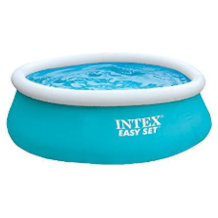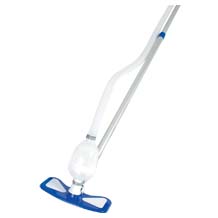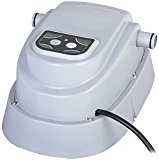Garden solar shower purchasing advice: how to choose the right product
- The most important facts in brief
- Solar showers are special designs for outdoor use. Their water tank heats up through direct sunlight.
- Maximum temperatures of up to about 60 degrees Celsius are possible.
- It is important to distinguish between permanently installed garden showers with temperature controllers and simple systems for camping, where the temperature cannot be adjusted.
- Since no electricity is consumed, the use of a solar shower is cheap and environmentally friendly.
Function and possible uses of a solar shower
A solar shower guarantees pleasant cooling in your own garden, on the terrace or at the campsite. No matter whether you have been lying in the sun for a long time, have done some physical work outside or are looking for a cooling down after a long day at the office: An outdoor shower refreshes and literally washes away the stress of everyday life. The garden shower also cuts a fine figure as a replacement for a pool or as an additional pool shower.
Water that comes directly from the cold water pipe has an average temperature of 10 degrees Celsius. For the majority of people, this is clearly too cold, even at summer outdoor temperatures. Solar showers provide a remedy: they use solar energy to heat the cold water free of charge and in an environmentally friendly way, as they are completely emission-free. Electricity is therefore not needed.
How does the heating of the shower water work?
A solar shower for the garden is connected to an ordinary garden hose. This hose feeds the water tank with fresh water from the mains. The cold water is heated by sunlight hitting the sheathing. The water tanks are often black in colour, as black reflects less light and thus stores heat particularly well. In this way, the water can reach temperatures of up to 60 degrees Celsius within a few hours in strong sunlight. At this temperature, showering is out of the question – it is simply too hot. By means of a mixer tap, or more precisely a single-lever mixer tap, you control the admixture of cold water from the garden hose and thus regulate the temperature of the shower water continuously. Installation indoors is not suitable due to the lack of solar radiation.
In this case, solar does not mean photovoltaic
In the solar showers described here, the water heats up solely through solar radiation on the water tank of the shower. It is therefore explicitly not a technology in which a solar module converts solar energy into electricity and heats the shower water electrically. These solar showers work without electricity through the heat absorption of the colour black.
Different types of solar showers
With solar showers, a distinction must be made between versions for the garden and versions for camping. Basically, both versions work according to the same principle: water in a tank is heated by the power of the sun alone, so that a warm shower bath is possible.
Garden showers: Comfortable and intended for permanent installation
Garden solar showers can be understood as classic solar showers, are usually firmly anchored in the ground – they are mounted by means of a stand and base plates – and have a comparatively large water tank: Approximately 60 litres are the maximum possible with these models and are heated in the tank.
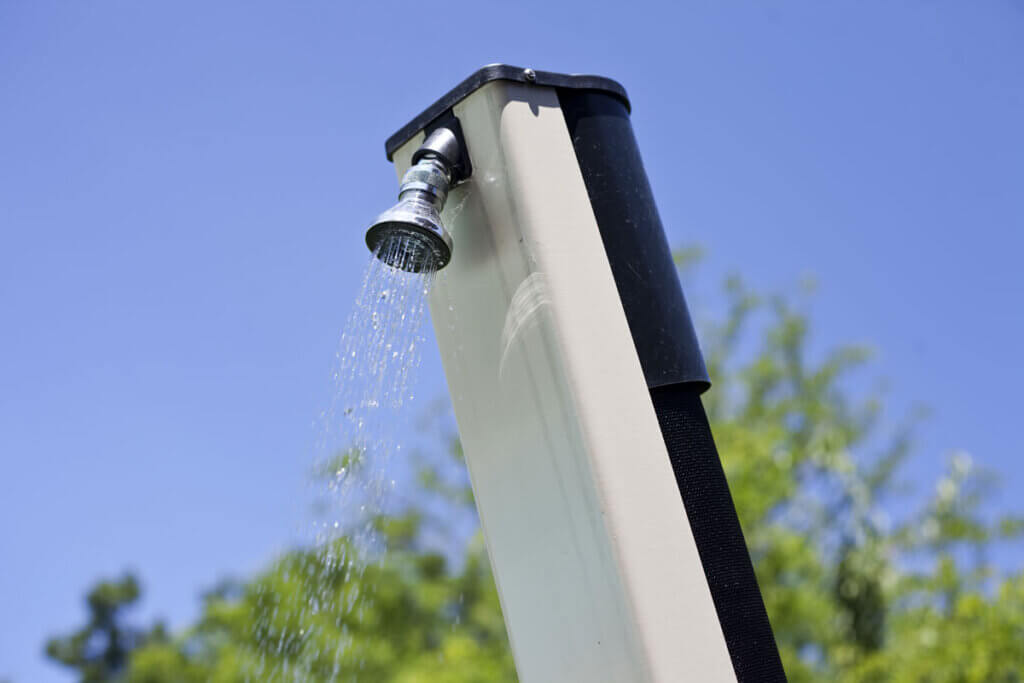
Unlike camping showers, these products have the advantage that they do not have to be filled with water manually, but are fed via a garden hose. The water in the tank heats up due to solar radiation. Users take this hot water when showering and regulate the water temperature by adding the desired amount of cold water at a mixer tap. After they have taken water, fresh water is constantly running in, thus lowering the temperature of the currently available water. If you take out a lot of water, you have to wait a while until the sun has sufficiently tempered the mix of warm and replenished water.
Caution: Is there really a heat function?
When buying, make sure that the garden shower really does have a water tank. Some garden showers can be connected to the garden hose but do not have a tank in which water is heated by the heat of the sun. You only get refreshingly cold water from these models, but not heated water. This is called a garden shower, but not a solar shower.
Compared to camping showers, solar garden showers have a longer service life. They are not designed as simple plastic bags, but are made of various UV-resistant materials, such as plastic, stainless steel, PVC, aluminium or wood.
Since garden showers require a water connection and are anchored in the ground, they are not designed for mobile use, unlike camping showers.
Pro points
- Adjustable water temperature
- Larger tanks possible
- High durability
Drawbacks
- Not transportable
- Water connection necessary
Camping showers: Less comfort, but highly transportable
Camping solar showers are slimmed-down solar showers that offer less comfort but are much more portable due to their freestanding installation. They are often just a dark-coloured plastic bag that can be hung from a tree, for example, by means of a hook. A shower head can be attached to the outlet of the hose so that a shower effect is achieved. This type of shower is ideal for use in tents and mobile homes away from campsites with their own sanitary facilities.
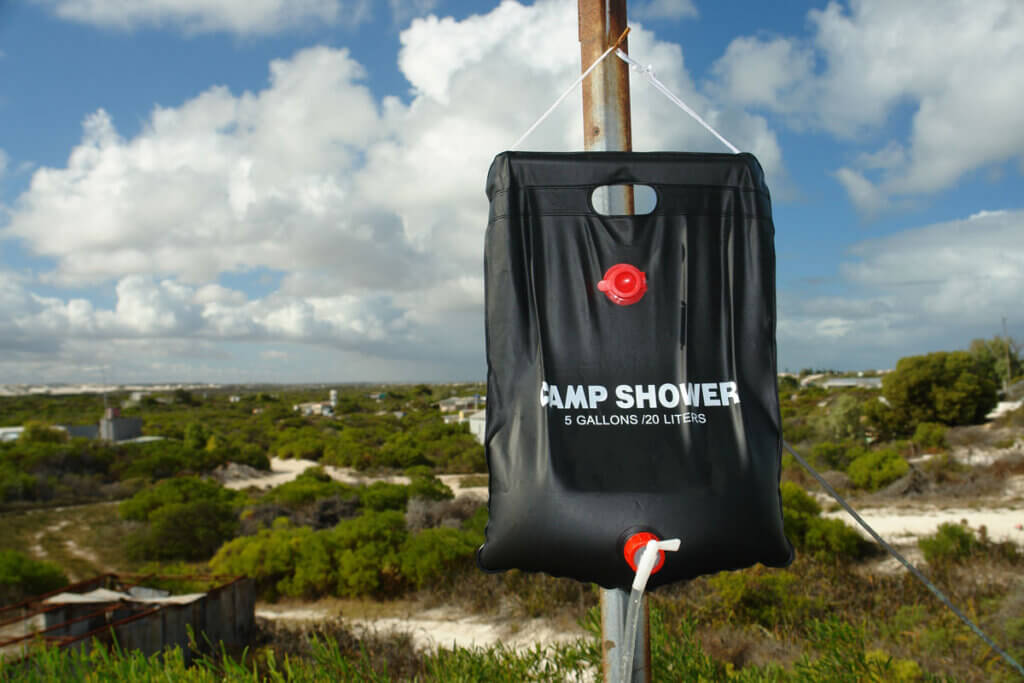
In contrast to the garden showers, no fresh water hose can be connected to these shower tanks. Instead, users fill them via a large filler opening at the front. Smaller versions can be refilled using water bottles or small canisters; for larger versions with a capacity of up to 20 litres, this quickly becomes tedious. In these cases, you should use a watering can or – if available – a garden hose to fill the tank via the filler neck.
One disadvantage of camping showers is that, unlike garden showers, it is not possible to regulate the temperature. If the sun has raised the water temperature in the bag too much, manual re-mixing with cold water is necessary. Users may first have to drain a certain amount of the heated water to be able to refill with colder water.
Since camping showers are sturdy plastic bags in combination with a plastic hose, these variants are very cheap to buy. On the other hand, they are less durable than the permanently installed garden showers.
Pro points
- Very portable
- Can be filled by bottle or watering can
- Inexpensive to buy
Drawbacks
- Temperature at the outlet cannot be controlled
- Shorter shelf life
- Smaller tanks
What you should look for when buying
In addition to deciding between a solar shower for the garden and a mobile solar shower for camping, there are a number of other factors that consumers should consider when making their purchase decision. These include, for example, the material, the volume of the water tank and the type of shower head.
Material
Camping solar showers are made entirely of PVC plastic. For garden solar showers, prospective customers have the choice between models made of PVC, stainless steel and aluminium. Some showers are covered with materials such as wood.
Garden solar showers made of PVC are UV-resistant, but only have a limited lifespan. Prolonged exposure to sunlight causes the material to initially wear down and later become brittle and fragile. However, these materials are very cheap, which explains why most showers in the lower and medium price ranges are made of the plastic. A durability of about 15 years can be expected.
Models made of aluminium are more robust and also last longer. Stainless steel models are a real eye-catcher and unrivalled in terms of durability. However, these plus points are also reflected in a higher purchase price. The material is also protected against corrosion and easy to clean.
Size of the water tank
When choosing a solar shower, the size of the water tank plays a central role. This key figure determines how many people receive hot water when showering. The following values can be used as a rough guide.
| Size of the tank | Number of persons who can take a hot shower |
| 15 litres | 1 |
| 25 litres | 2 |
| 35 litres 3 or more | 3 or more |
Camping showers usually have water tanks with a size of 10 to 20 litres. A few models even have a volume of 40 litres. For solar showers for the garden, the range is 10 to 60 litres. Larger tanks are therefore particularly worthwhile if several members of a family want to shower one after the other. Especially if small children also use the shower, you should opt for a large water tank.
Type of shower head
In addition to normal shower heads with a small diameter, rain shower heads, also called rain shower heads or rain forest shower heads, are very popular. These are wider shower heads with a diameter of 20 to 35 centimetres. The pleasant effect: the entire body is sprayed like in a rain shower, whereby the water jet is not limited to a small area such as the head.
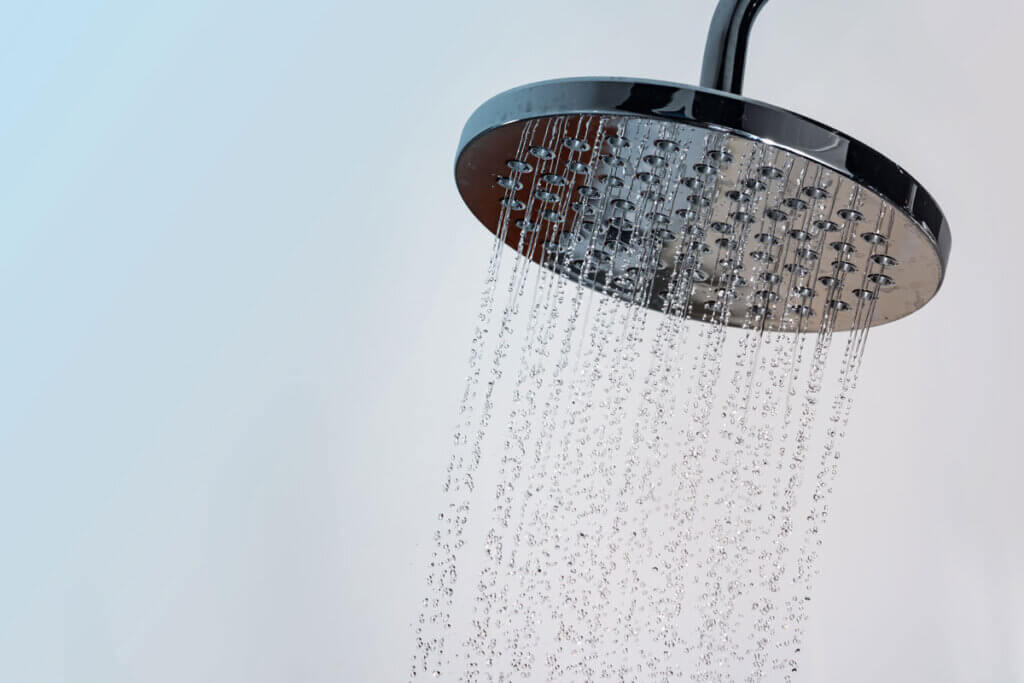
Height-adjustable and swivelling shower head
If several people of different heights use the solar shower, it makes sense to be able to adjust the height of the shower head. It is also practical if the shower head is not rigid but can be swivelled so that users can let the cool water rain down on their bodies at the desired angle. It is important to like the type of shower head, because not all models can be exchanged for another variant. Sometimes the shower heads do not have a swivel thread, but are firmly connected to the rest of the solar shower. In this case, only a complete replacement will help.
Foot shower
Foot showers are taps or showers that are mounted at a low height on the solar shower. The purpose of foot showers is to clean sand, soil or grass off the feet after a barefoot walk through the garden without having to turn on the shower.
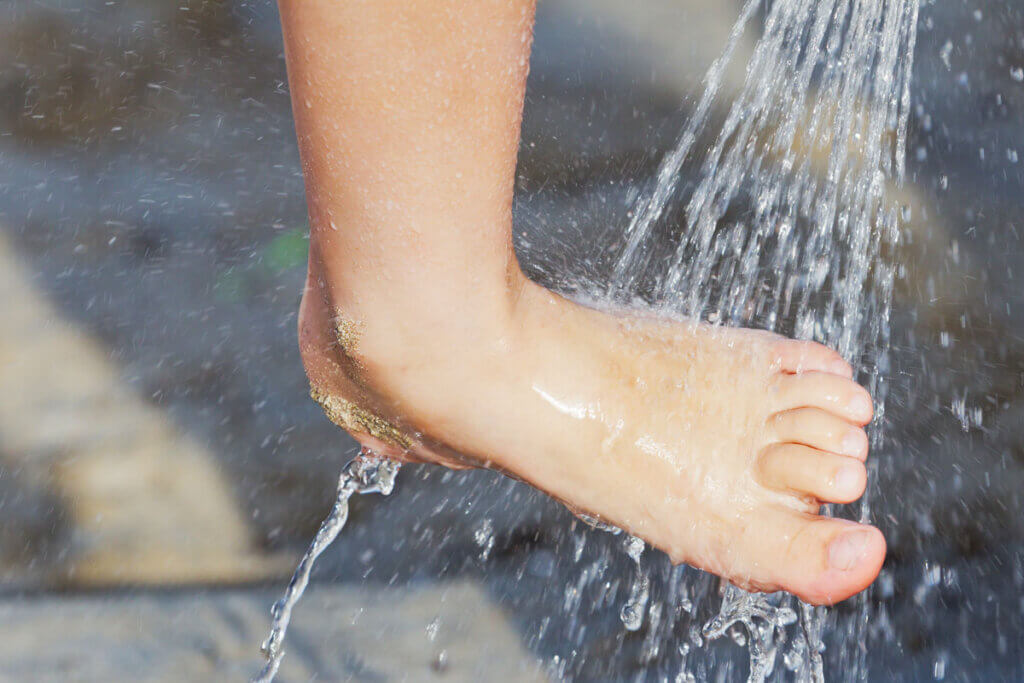
Removable hand shower
A detachable hand shower is particularly suitable for showering hands and feet without getting the rest of the body wet.
Mixer tap
The mixer tap allows users to mix heated water from the tank with cool, fresh water from the garden hose, bringing the shower water to the desired temperature. Garden showers usually have a single-handle tap that allows them to adjust the temperature of the water continuously.
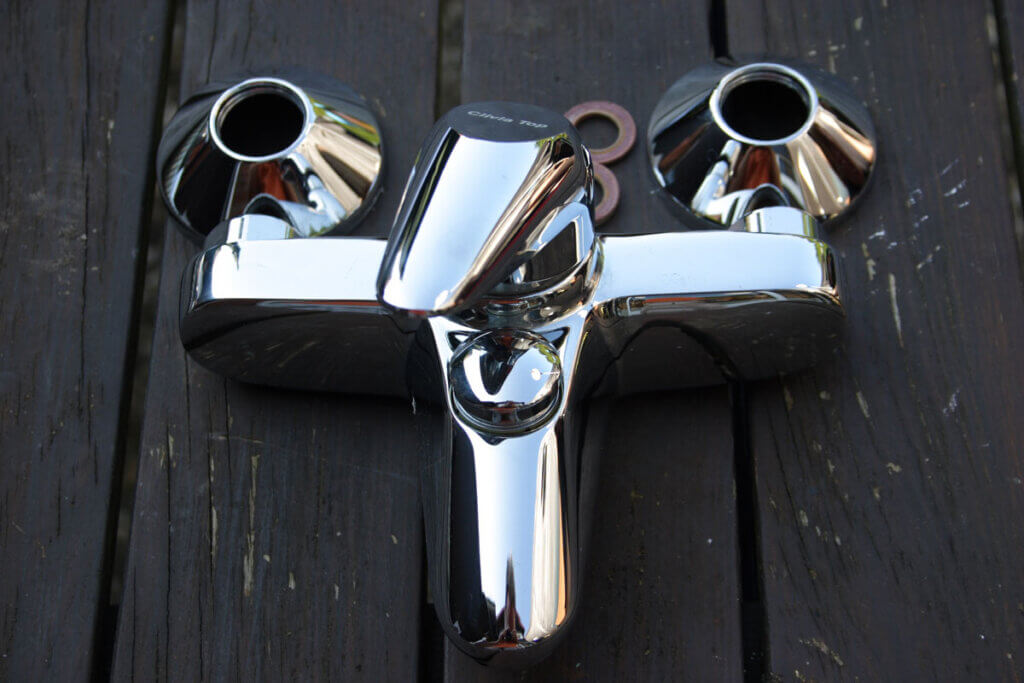
In most cases, camping showers do not allow this: with these models, water-hungry people can only use the heated water from the plastic bag, mixing with cold water is not possible. If the shower water has heated up too much, users have no choice but to mix it manually with cold water via the filler neck. To do this, they may first have to pour out some of the already heated water to make room for new liquid.
Thermometer
Some models have a thermometer integrated into the shower’s standpipe, from which shower enthusiasts can read the temperature of the heated water inside the tank. Based on this value, they can then roughly estimate which setting they should make on the mixer tap.
If in doubt, those seeking refreshment should first drain off a small amount of the hot water still in the pipe before carefully checking the temperature of the water flowing out to avoid scalding due to an excessively high water temperature.
Position of the water tank and type of installation
In solar showers, the water tank is either built into the stand or integrated into the stand. The models with a stand tank are much more stable due to the lower centre of gravity. Therefore, with these models, all you need to do is connect a garden hose and the showering pleasure can begin. Since the installation location can be easily changed with these models, they are suitable for users who want to use the solar shower at different locations in the garden. The mobile garden showers therefore provide temporary showering pleasure and are a temporary feature in the garden on hot days. They can thus serve as a substitute for the pool in the garden if space is limited and the budget is small.
The water often heats up more quickly in the stand-mounted version due to the larger footprint. However, they should be fixed to the ground for improved stability. Most of these models have corresponding floor elements along with mounting materials such as screws. These showers are therefore suitable for users who want to operate their solar shower in the same location in their garden for a long time.
Popular brands
Steinbach | Arebos | Berlan | Monzana | time4wellness | G.F. Garden | vidaXL | Steinbach | Nemaxx |
After the purchase
Once you have decided on a solar shower model, you may be faced with the next uncertainties. We give you tips on where to place the shower, how to clean it, how to regulate the temperature and how to avoid bacteria.
Where should a solar shower be installed?
A place at the edge of the garden is recommended. It is also ideal to have a water connection nearby. If this is not available, you will have to bridge longer distances with the garden hose, which creates an additional risk of tripping. Tip: In this case, lay the water hose underground to minimise the risk of accidents. It is also a good idea to install it in an area of the garden that receives as much sunlight as possible during the day. After all, this is a prerequisite for heating the water. Also bear in mind that a privacy fence installed in front of the shower can reduce the efficiency by casting shadows. Furthermore, the location should be protected from the wind to avoid cooling down in windy weather. If you want to use the solar shower in one place for a long time, it is a good idea to pour a concrete foundation for a permanent, secure stand.
Make sure to keep sufficient distance to floor windows in houses with basements. Otherwise, if there is insufficient seepage into the ground, it is possible for water to enter your basement. The safest option is to have a drain near the shower that drains used water into the sewage system.
What do I have to consider regarding the water temperature?
On very sunny days, the water tank can heat up so much that the water inside reaches or even slightly exceeds a temperature of 60 degrees Celsius. In these cases, there is an acute risk of scalding when using the shower. First turn on the cold water and gradually mix in the heated water to achieve a temperature that is comfortable for you. Be sure to explain the procedure to your children and guests to avoid the risk of accidents.
Caution: Temperature selection usually not possible with camping showers
With camping showers, it is usually not possible to mix the temperature using the temperature selection lever. With these models, a temperature change can only be achieved by manually filling in cold water. Therefore, on particularly hot days, heat a smaller amount, for example half the bag, to have enough volume left for mixing.
How should I clean my solar shower?
One positive aspect right from the start: solar showers require little maintenance. A problem that also occurs in other areas where water is involved is blockages and deposits caused by limescale. Depending on the water hardness of the region where you live, the shower head can clog at different rates. Regular cleaning with a descaling agent or vinegar guarantees an optimal water flow. If there are wooden components, you can treat them like other wooden garden furniture with weather protection varnishes. These protect the wooden components from weathering. Stainless steel elements lose their shine with increasing outdoor use. Here you can help yourself with a little polish to regain the original radiance.
Is there an increased risk of bacteria when using solar showers?
Inside the water tank and the garden hose that feeds it, temperatures quickly rise to between 25 and 45 degrees Celsius. These conditions favour the multiplication of legionella. These are bacteria that enter the body through the respiratory tract and can lead to lung diseases. Although legionella die at around 60 degrees Celsius, the water in the tank only reaches these temperatures on very hot summer days. Therefore, do not let water stand in the tank for too long. It is best to fill the tank only if you plan to use the water promptly. Empty the tank regularly so that the water does not remain in the tank for too long. Most solar showers have a drain screw or a drain valve on the underside for this purpose. Then rinse the tank with cold water by running fresh water for a few seconds.
How do I winterise my solar shower?
Showers have water-bearing parts. Before the first frost, you should therefore drain all water from the tank and the shower hose so that no damage is caused by the expanding ice. Actually, the materials are weatherproof, but storing a mobile shower that is not fixed to the ground in a garage, shed or cellar during the cold season increases its lifespan. Even with permanently mounted garden showers, you should drain the water first to avoid frost damage. Covering them with foil or a protective bonnet protects them from weather damage. Complete disassembly and subsequent storage are also possible, but more costly. You should also at least drain the water-carrying garden hose, and it is better to store it as well. Pay attention to the instructions in the user manual regarding storage.
Building a solar shower yourself
With a little imagination, a pinch of craftsmanship and a small outlay of money, it is possible to build a solar shower according to the do-it-yourself principle. However, for users with little experience and those who shy away from the long planning and construction process, we recommend buying one of the products in our comparison.
All materials in which the water is sufficiently heated by sunlight are suitable as water tanks. Conceivable materials include garden hoses, watering cans, water canisters, empty pipes or sunshade stands that can be filled with water.
Fig 1: © GC_Images / stock.adobe.com | Fig 2: © sallydexter / stock.adobe.com | Fig 3: © Naypong Studio / stock.adobe.com | Fig 4: © sasel77 / stock.adobe.com | Fig 5: © regidür Zteil / stock.adobe.com

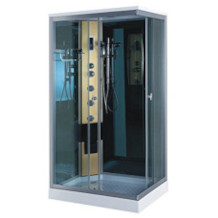
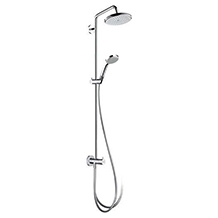
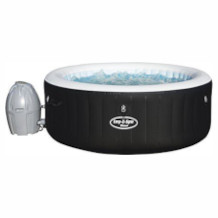
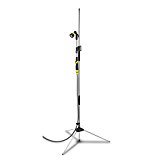
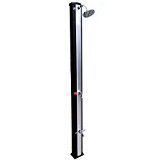










 4,481 reviews
4,481 reviews
